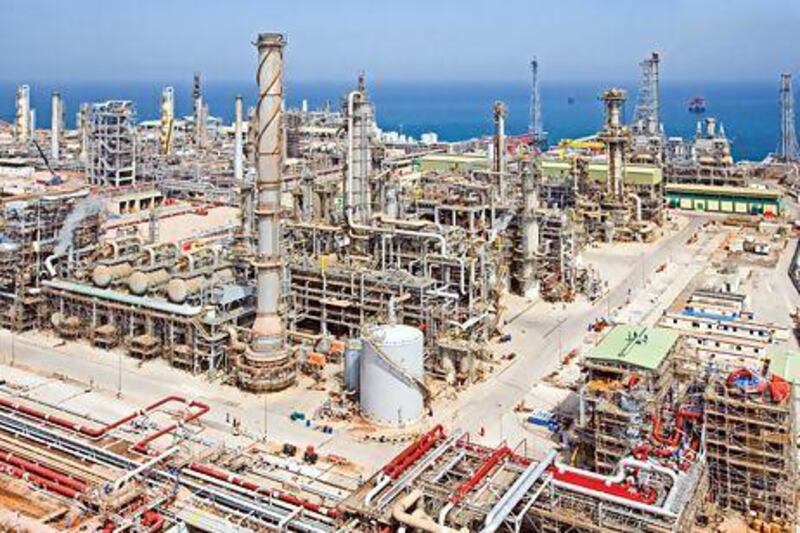Abu Dhabi's recent history, economy and even identity are dominated by oil. From modest beginnings the emirate is now one of the world's largest producers.
Natural gas has been a footnote in the emirate's hydrocarbon story so far. It accounts for only a fraction of export revenues and is rarely mentioned in the same breath as Abu Dhabi abroad.
But the low visibility of gas hides its growing domestic importance, and the fuel has played a central role in energy plans for some time. Abu Dhabi is not without gas. It holds the fourth-largest reserves in the Middle East, and is also the region's fourth-largest producer.
But because of rapid growth in the consumption of electricity and water, and the reliance of power generation and desalination on gas, demand is now outstripping domestic supply.
This problem is faced by all countries in the GCC with the exception of gas-rich Qatar. In Abu Dhabi, efforts to diversify the economy away from its dependence on oil revenues include expanding the power-hungry industrial base.
"It's becoming apparent in the last few years that gas demand is really gathering pace, and supply is struggling to keep up," said Alex Munton, a gas analyst at the research consultancy Wood Mackenzie.Much of the region's gas is associated - that is, mixed up with crude - and is pumped out of oil reservoirs as a side product. In the early days of Arabian Gulf oil production, little or no use was found for it, and it was flared at the site.
In spite of widespread power shortages, this was still standard practice in Iraq until Shell last week completed a facility that processes part of the gas from the country's megafields in the south.
In the rest of the region, the value of gas has become evident. But associated gas is limited to oil production, and the number of standalone gasfields are few.
In Abu Dhabi, the Habshan 5 gasfield development is nearing completion. The project will process 1 billion cubic feet per day (cf/d) of gas from onshore and offshore oilfields, and marks the end of the emirate's capacity growth supply from conventional sources.
"Across the GCC, we're coming to an end of a period of unprecedented gas supply growth," said Mr Munton. "The key questions is: Where is the new supply growth coming from?"
The answer lies in part with unconventional resources, gas that is laced with chemicals or stuck in rock formations that are hard to exploit.
Abu Dhabi National Oil Company (Adnoc) has begun to develop its unconventional gas at a high cost.
Next year, production will begin at the Shah sour gasfield, where a joint venture between Adnoc and the US company Occidental Petroleum plans to extract 1bn (cf/d) of sulphur-rich sour gas. After the sulphur is extracted, the US$10bn project will yield 500m cf/d of usable gas.
Another sour gas project, at the Bab field, was last week awarded to Anglo-Dutch oil producer Shell. A smaller sour gasfield at Shuwaihat is being appraised by a joint venture of Germany's Wintershall and Austria's OMV.
As sour gas is highly toxic and difficult to treat, its production is significantly more expensive than conventional gas, so the Government is paying dearly for the profligate consumption of its population.
Sour gas remains cheaper than imports of liquefied natural gas (LNG). But supply constraints have forced Dubai to import LNG during the summer months, when demand for electricity spikes, and Abu Dhabi is now following suit.





